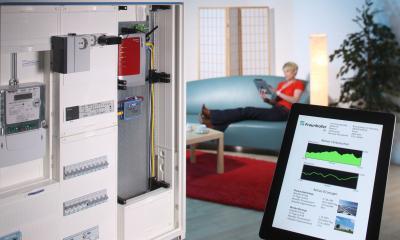A recent trend has seen government efforts to switch to energy sources that are variable - wind turbines and solar parks - but those have been expensive and have not caught on because grid structures, industry and private households don't want to deal with the fluctuations. People want their lights to turn on when they want them, not when nature randomly decides.
However, smarter energy management systems might make alternative energy schemes more palatable to consumers and business.
Today, alternative energy runs on an impossible business model. The government subsidizes the installation and then they force utilities to buy any excess electricity at the same rate they charge. This means there is no money for employees, equipment or the grid. As a novelty that is okay, utilities simply charge everyone else higher rates to offset the losses on green energy, but it can never be viable. However, it can be less non-viable if you have a host of individual small energy producers feeding in energy to the grid at varying times, rather than everyone in an area supplying excess energy no one needs at the same time and being overcharged for it.
The "Combined Power Plant 2" research project wants to use a software platform to bring together a multitude of small energy providers within a "virtual power plant."
Experts have already conducted a test showing that this setup could work reliably in practice, having combined numerous wind parks, biogas and photovoltaic facilities delivering a total output of over 80 MW (about 40,000 homes) in a virtual combined-cycle power plant. In their scheme, small providers work together, regional variations in wind and sun can be evened out via the grid or using biogas facilities that can be regulated according to requirement. Surplus energy is either stored or converted into heat. The result is a network that remains decentralized but can still operate as a larger unit in energy trading markets.
"The results of the Combined Power Plant 2 project demonstrate that network reliability can be guaranteed even when relying purely on renewables," says Dr. Kurt Rohrig, deputy director of the Fraunhofer Institute for Wind Energy and Energy System Technology IWES in Kassel.

In alternative energy marketing, your house is always cleaner and futuristic. Credit: Kurt Fuchs/Fraunhofer IIS
More and more companies are generating energy themselves, using solar installations or systems that recover energy from manufacturing waste, in an effort to cut costs. Now, researchers from the Fraunhofer Institute for Factory Operation and Automation IFF in Magdeburg have developed dynamic energy management systems that manage distributed energy providers, storage and current energy consumption efficiently. Installed in a company, such a system determines whether enough renewable energy will still be available to charge the fleet of electric company cars once power has been supplied to the HVAC system. So that the system can operate fully automatically, the amount of energy required and the amount of power expected to be produced on a given day are measured at first for general planning. In the detailed planning stage, data are supplied for the next fifteen minutes. The researchers use neural networks trained specifically for the particular complex infrastructure to make a forecast, which the system then uses to optimize energy use in the next quarter of an hour automatically.
"We need to change our thinking from the now common generation of power geared toward consumption to consumption geared toward providers. Smart and dynamic management systems ensure that energy is used efficiently all the time," explains Dr. Przemyslaw Komarnicki from the Fraunhofer IFF.
Technologies for smart energy use in the home
With solar cells on the roof and small combined heat and power plants in the basement, homes are also generating energy. But the energy a household generates is seldom sufficient to meet its combined energy requirements throughout the year. The only option is to buy in energy – preferably when it is at its cheapest. "There are significant savings to be made if you can cleverly combine independently generated energy with variable energy tariffs and storage," says Jasmin Specht from the Fraunhofer Institute for Integrated Circuits IIS in Erlangen. In an effort to make this a reality, researchers from Fraunhofer IIS, Fraunhofer ISE and Fraunhofer IWES are working on an open software platform called OGEMA 2.0 that will allow modular energy management systems to be developed efficiently.
OGEMA 2.0 energy management systems can control energy producing, storing and consuming devices to achieve their optimal use. Not only do they facilitate the best possible use of independently generated energy in houses or apartments, they also allow users to store excess energy and to recall it when it is required. On top of providing key management functions, the system can also communicate with other participants in the smart energy network. This allows to actively contribute to supply stability and the inclusion into a virtual power plant.
Secure energy management via apps
The smart energy management system can be accessed via various interfaces, including smartphones, tablets and computers. For example, OGEMA 2.0 enables apps that tell users whether they would be better off using the energy generated by their solar cells themselves or whether they should feed it in to the grid. Such apps are also capable of tracking variable energy tariffs and automatically calculate when and how best to use connected devices such as heat pumps, storage systems, air conditioning systems and other smaller consumers of energy. OGEMA 2.0 even helps charge electric vehicles cost-effectively, with the E-Car Communication Manager (ECM) coordinating communication among various charge spots (direct and alternating current), the driver and the car's battery system. The system features the maximum security level in line with the protection profiles of the BSI (Federal Office for Information Security). This means smartphone users also have secure access to OGEMA 2.0 while on the move.





Comments